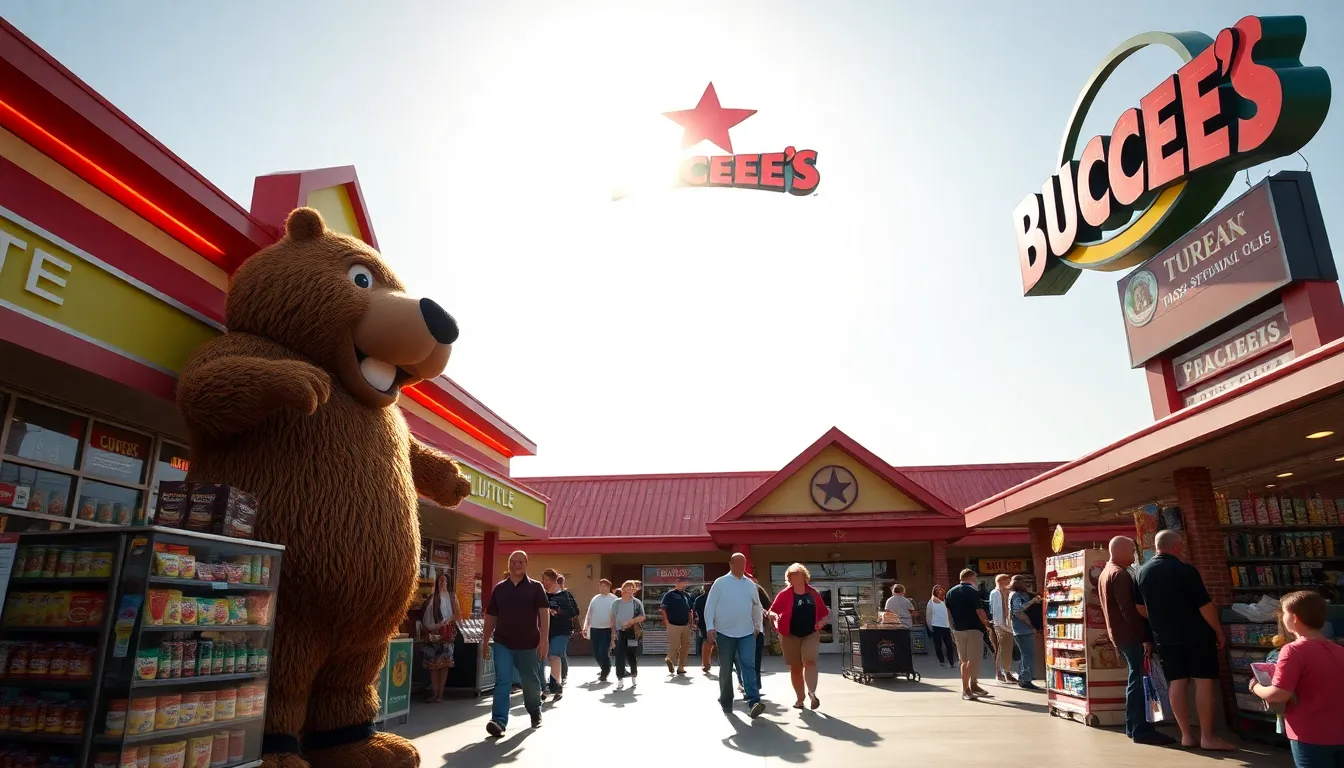Buc-ee’s, the beloved Texas-based travel center, has captured the hearts of road trippers with its vast selection of snacks, clean restrooms, and unique merchandise. However, recent news about a funding shortfall for its Anderson location has raised eyebrows and sparked discussions among fans and investors alike. This unexpected financial hurdle could impact the company’s ambitious expansion plans and its ability to deliver the Buc-ee’s experience that so many have come to love.
As Buc-ee’s navigates this challenge, it’s essential to understand the implications of the funding shortfall. With a growing demand for its signature offerings, the company faces pressure to address financial gaps while maintaining its reputation for quality and customer satisfaction. Exploring the details of this situation reveals the complexities behind Buc-ee’s growth strategy and the potential effects on its future in the competitive travel retail landscape.
Table of Contents
ToggleBuc-ee’s Anderson Funding Shortfall Overview
Buc-ee’s faces a significant funding shortfall at its Anderson location, endangering its expansion initiatives. This shortfall results from increased operational costs and delays in construction, impacting potential openings. Investors express concern about the viability of the Anderson site, especially amid rising demand for Buc-ee’s existing locations.
Financial reports indicate a lack of adequate capital to meet projected milestones. The Anderson site requires approximately $10 million in additional funding to complete construction and operations. Delays have occurred due to supply chain disruptions and labor shortages, which further complicate budget management.
Customer feedback highlights the eagerness for Buc-ee’s to expand in Anderson, with local polls showing over 70% community support for the new location. However, without securing necessary funding, the company might need to reduce its initial scope or delay the project indefinitely.
Market analysis shows Buc-ee’s competitive standing suffers due to the inability to open new locations. Local competitors quickly fill the gap left by Buc-ee’s absence, attracting potential customers. The financial strain from the Anderson shortfall may influence future expansion strategy, prioritizing financial stability over aggressive growth.
Key Factors Contributing to the Funding Shortfall

Buc-ee’s Anderson location faces a funding shortfall, primarily due to economic challenges and increasing competition in the market. Understanding these factors is crucial for assessing the implications for the company and its future expansion plans.
Economic Challenges
Economic conditions significantly impact Buc-ee’s funding. Rising operational costs, driven by inflation and increased material prices, strain the financial resources required for construction and daily operations. Supply chain disruptions contribute to project delays, hindering timely completion and escalating costs further. Labor shortages also affect staffing capabilities, limiting operational efficiency and increasing payroll expenses. Financial estimates indicate that an additional $10 million is necessary to address these economic hurdles. Without securing this funding, Buc-ee’s may face difficult decisions regarding project timelines and budget allocations.
Competition in the Market
Competition intensifies as local businesses quickly capitalize on Buc-ee’s funding delays. Area competitors offer similar products and services, increasing their market share while Buc-ee’s remains unable to establish a physical presence. Market analysis highlights that these businesses can meet local demand, undermining Buc-ee’s competitive advantage. The urgency to secure funding grows as failure to act risks diminishing the brand’s visibility and customer loyalty. Prioritizing financial stability may lead Buc-ee’s to adjust its aggressive growth strategy, potentially affecting further expansion initiatives across Texas and beyond.
Impact on Buc-ee’s Operations
The funding shortfall at Buc-ee’s Anderson location directly affects its operations, particularly in staffing, service, and product availability. The financial challenges necessitate strategic adjustments to maintain competitiveness in the market.
Staffing and Employment Changes
Staffing levels at the Anderson location may decrease as Buc-ee’s grapples with funding constraints. Hiring delays result in limited personnel available for operations, impacting service quality. Training opportunities for new employees also diminish, affecting efficiency and customer experience. Local labor markets show a demand for employment, yet Buc-ee’s inability to secure adequate funding hampers its capacity to recruit and retain skilled workers. Current employees face increased workloads, potentially leading to job dissatisfaction and turnover.
Service and Product Availability
Service offerings and product availability at Buc-ee’s Anderson may face significant limitations due to the funding shortfall. With approximately $10 million needed for full operational capability, customers could experience reduced selection and longer wait times. Inventory levels might decrease as supply chain disruptions continue to affect procurement. Competitors in the area capitalize on Buc-ee’s delays by enhancing service offerings that could entice potential customers away. Maintaining popular snack items and unique merchandise hinges on resolving these funding issues to ensure a broad and appealing inventory.
Future Outlook for Buc-ee’s
Buc-ee’s faces significant challenges due to the funding shortfall at its Anderson location. Addressing these issues effectively is crucial for maintaining its growth trajectory.
Strategies for Recovery
Buc-ee’s may explore several strategies to recover from the funding shortfall.
- Cost Management: Implementing strict budgeting measures can help control expenses, allowing the company to allocate resources more effectively toward completing the Anderson site.
- Partnership Development: Establishing partnerships with local businesses can enhance operational capabilities, potentially providing additional funding or resources for project completion.
- Community Fundraising Initiatives: Launching targeted fundraising campaigns may rally community support, enabling residents to invest in the future of their beloved travel center.
- Adjusting Growth Plans: Modifying expansion strategies to focus on completing existing projects, like Anderson, before pursuing new sites may streamline resources and enhance overall viability.
Community Involvement and Support
Community support plays a significant role in Buc-ee’s strategy moving forward.
- Local Polls: With over 70% of local residents in favor of the Anderson location, Buc-ee’s can leverage this support to build a persuasive case for potential investors.
- Customer Engagement: Hosting community events or promotional activities can strengthen relationships with local customers, increasing brand loyalty and direct involvement in Buc-ee’s future endeavors.
- Feedback Mechanisms: Establishing channels for customer feedback allows Buc-ee’s to better understand community needs and preferences, fostering a sense of ownership and collaboration.
- Local Partnerships: Collaborating with local organizations or charities can enhance Buc-ee’s reputation, further embedding it within the community and generating goodwill.
These strategies and community engagement initiatives are vital to overcoming the funding challenges at the Anderson location, providing a roadmap for Buc-ee’s sustainable growth in the competitive travel retail market.
Buc-ee’s faces a pivotal moment with the funding shortfall at its Anderson location. The challenges posed by rising operational costs and construction delays could significantly impact its expansion plans. While community support remains strong, the urgency to secure additional funding is paramount for maintaining service quality and market competitiveness.
The company’s ability to adapt through strategic budgeting and local partnerships will be crucial. Engaging the community not only fosters loyalty but also attracts potential investors. As Buc-ee’s navigates these financial hurdles, its future growth will depend on effectively addressing these challenges while continuing to meet the high demand for its beloved offerings.



